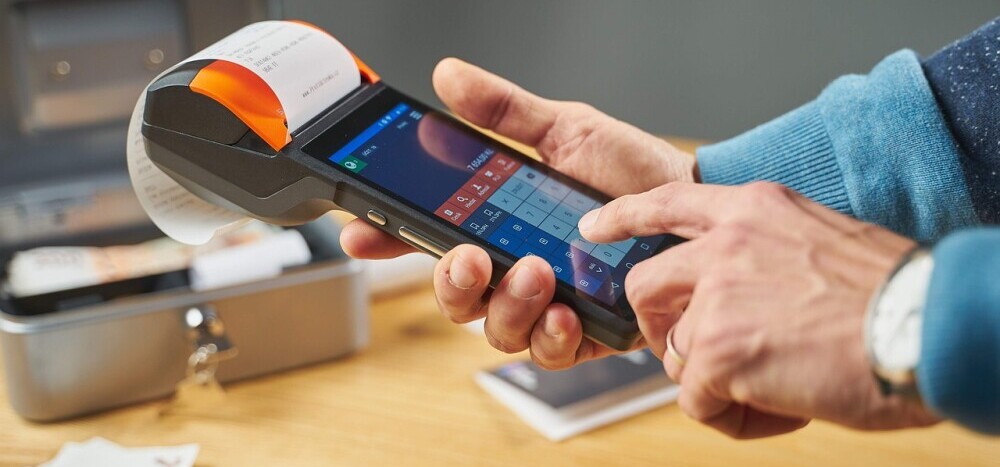
E-commerce stores often work hard to get people to their sites. But the checkout page is where the magic or disaster happens. It’s the make-or-break moment for any sale.
A smooth checkout process isn’t just nice to have. It’s a necessity if you’re aiming to boost those affiliate sales. We’re talking about transforming casual browsers into happy customers with their shiny new purchases in the cart.
Numbers don’t lie. Studies reveal that nearly 70% of shoppers ditch their carts at the last second. That’s a ton of missed opportunities. Addressing those issues during checkout can seriously bump up your conversion rates.
The ultimate goal is to make checkout so seamless that it feels effortless. When the process is smooth, affiliates love it because their commissions see a jump. Shoppers love it because they get what they want with less hassle.
Optimizing checkout isn’t just about the sale itself. It’s about leaving a fantastic impression. That way, when your affiliates share their experiences, they’re talking about how easy it was to sell your products and not the hurdles they had to jump over.
Identifying Common Checkout Barriers
Facing those annoying checkout barriers can feel like running into a wall right before the finish line. We’ve all been there, trying to buy something online, and suddenly, the process feels more complicated than it should be.
Often, extra costs popping up at checkout freak people out. Shipping fees, taxes, or unexpected charges have a way of scaring folks off. They see that final price and decide it’s just not worth it.
Another headache is when there are too many hoops to jump through. Having to fill out long forms or create an account can drive potential buyers away fast. Nobody wants to spend ages inputting info when they just want to pay and be done with it.
Let’s talk about payment options, too. Limiting these can be a turn-off. When there are only a couple of ways to pay, shoppers might abandon their cart because their favorite option isn’t there.
On top of that, a clunky design or checkout pages that take ages to load can kill the mood really quickly. No one has the patience for a site that drags. It’s like waiting for water to boil while watching paint dry.
Understanding these roadblocks in the checkout process can help in tackling them efficiently to keep those sales from slipping away.
Simplifying the Checkout Process
Streamlining the checkout is like decluttering your room. You clear out all the unnecessary stuff, leaving only what’s essential. It’s about making things simple and quick for the shopper.
Start by cutting down the number of steps it takes to complete a purchase. Can you get it to just a few clicks? That’s the dream. Maybe remove unnecessary fields and simplify the forms, taking only what you need.
Mobile optimization is key. More people shop on their phones than ever before. If your checkout isn’t mobile-friendly, you’re losing out big time. Responsive design makes sure everything looks and works great on any device.
Let’s look at some real-world success stories. Look at how Amazon’s one-click ordering changed the game. It’s the ultimate example of making it easy for a customer to buy without having to think twice.
Autofill and guest checkout options are tools that can’t be ignored. They let shoppers breeze through without having to remember another password or fill out their details over and over again.
The easier you make it, the more sales you’ll get. It becomes a win-win situation where buyers are happy, and you get to celebrate consistently higher sales.
Enhancing User Experience with Personalization
Personalization in the checkout process is like having a friendly shop assistant guiding you through your purchases. It feels nice and adds a special touch to the shopping experience.
Using customer data wisely can really make a difference here. When you know a shopper’s preferences, you can suggest products or offer discounts that are just right for them.
Customized user interfaces make each visit feel unique. For example, if a customer regularly buys certain types of items, those can be highlighted when they start their checkout.
Look at big players like Netflix, who suggest what to watch next based on your viewing history. Apply similar ideas by presenting customers with items they might like based on past behavior.
Successful personalization can lead to higher sales and stronger loyalty, with customers appreciating that extra effort. They feel like the experience is tailored just for them, and that’s something they’ll remember.
Building that personal connection turns one-time buyers into repeat customers and makes affiliates eager to promote your store, too.
Building Trust Through Security and Transparency
Security during checkout is critical. People want to know that their data is safe when they hand over their card details. Implementing top-notch security measures is non-negotiable in today’s digital world.
Having a visible padlock icon in the browser bar goes a long way. It provides instant assurance that the site is secure. Customers shouldn’t need to second-guess if their payment info is protected.
Including secure payment gateways like PayPal or Apple Pay adds another layer of trust. These methods are familiar and comforting for many, increasing their willingness to hit that ‘buy’ button.
Clear and straightforward privacy policies can also help. When shoppers understand what will happen to their data, they’re more likely to follow through with their purchase.
Use reviews and testimonials to your advantage. Genuine feedback from other buyers can reassure potential customers that they’re making a safe choice. Displaying these prominently during checkout can ease any lingering doubts.
Transparency isn’t just good practice; it’s what shoppers expect. By meeting these expectations, you build a reputation that resonates with trust, setting your store apart from others.
Monitoring and Continuous Improvement
Successfully optimizing your checkout isn’t a set-and-forget task. It’s all about keeping an eye on things and tweaking them for better performance.
Tracking metrics like abandonment rates and conversion rates gives you a clear picture of what’s working and what’s not. These numbers tell the story of the checkout experience from a customer’s perspective.
Experimentation is your friend here. A/B testing different versions of your checkout page helps you figure out what resonates best with your audience. Maybe it’s a change in button color or simplifying form fields. Every little adjustment can lead to big wins.
Look to businesses that are always adapting to keep up with consumer behavior. They’re the ones thriving because they respond quickly to feedback and changes in online shopping trends.
Continuing to refine your checkout process keeps your store dynamic, ensuring it meets shopper expectations. This kind of commitment to improvement not only boosts affiliate sales but also strengthens your brand’s reputation for reliability.
_______________________________________________________
To learn more about Howard, you can check out this article.
My involvement in operating an online business started in 2014, and I did not do it alone! Online success takes hard work, perseverance, and help to learn all these things.
The industry is constantly changing, especially with the growth of Artificial Intelligence (AI) in the online world.
If you want to be taught how to create great website content and have an online business that could make you income 24/7, 365, then you may want to check out how I did it.
I used this source to learn, engage with others for assistance, and create online income using multiple affiliate marketing sources.
You can also reach out to me by leaving a comment below. I will get back to you!
